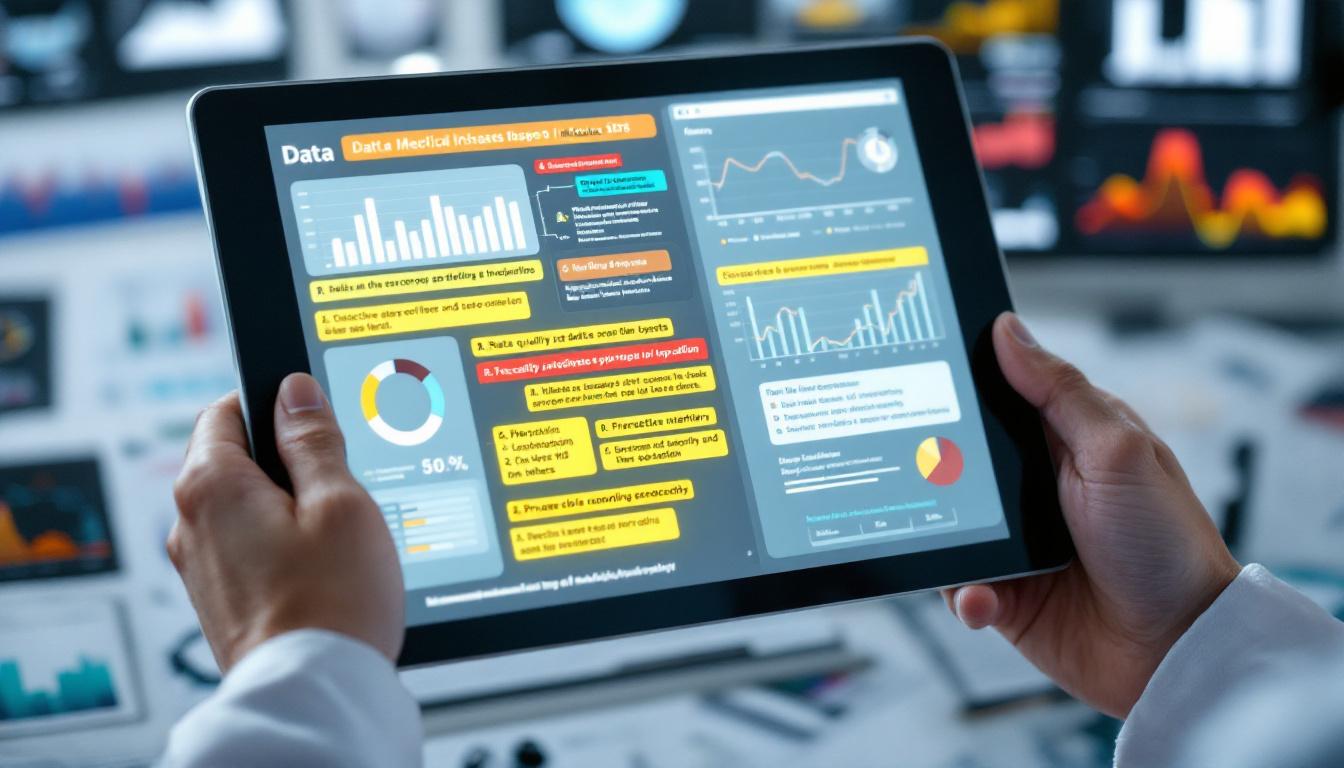
Predictive analytics is changing how clinicians, administrators, and health systems anticipate need, personalize treatment, and allocate resources. By transforming historical records, real-time monitoring, and population signals into actionable forecasts, predictive models are shifting care from reactive to proactive. This article explains current market trends, clinical impacts, implementation challenges, and practical steps for turning data into better patient decisions.
Market momentum and adoption trends
The healthcare predictive analytics market has experienced rapid growth and strong investment. Recent market analysis estimates the global market at roughly $14.5 billion in 2023, with projections that place it far higher in the coming decade — reflecting sustained adoption across provider organizations, payers, and life sciences companies. See the market forecast for full context: global healthcare predictive analytics market.
Adoption within U.S. hospitals is already substantial: about two-thirds report using predictive analytics or AI-driven predictive models, and most of these organizations rely on models provided by their Electronic Health Record (EHR) vendors rather than bespoke internal builds. These adoption patterns influence where innovation occurs and how trust in models develops across clinical teams (hospital AI adoption statistics).
Beyond hospitals, payers are increasingly integrating predictive analytics to optimize risk assessment, manage chronic diseases, and tailor member interventions. This trend not only improves cost efficiencies but also enhances patient engagement by enabling more personalized care pathways. Additionally, pharmaceutical companies leverage these technologies to accelerate drug discovery and improve clinical trial design, thereby reducing time to market and increasing the success rate of new therapies.
Emerging technological advancements, such as the incorporation of real-world data and social determinants of health into predictive models, are further broadening the scope and accuracy of healthcare analytics. Furthermore, regulatory frameworks are gradually adapting to foster innovation while ensuring model transparency and patient safety. These developments collectively strengthen the momentum of predictive analytics, paving the way for more widespread and impactful adoption in the near future.
Clinical impact: outcomes, early detection, and personalization
Predictive models have produced measurable clinical benefits. Several health systems report substantial reductions in hospital readmissions where risk stratification and targeted follow-up interventions were deployed, with some programs documenting reductions up to 50%. Lower readmission rates translate directly into improved patient outcomes and cost savings for both hospitals and payers (readmission reduction data).
Early disease detection is another strong use case. Models trained on imaging, pathology, and longitudinal clinical records are helping detect cancers and other conditions earlier than traditional workflows alone. These tools augment clinician judgment rather than replace it, flagging cases for expedited review and enabling earlier interventions that improve prognosis.
Personalized medicine benefits from predictive analytics by combining clinical history, lab results, and genomic data to tailor treatment plans. Genetic insights and risk scores inform preventive strategies and medication choices, reducing adverse reactions and improving efficacy. Companies offering consumer genetic testing have catalyzed demand for integrating genomic data into clinical decision-making (genomic insights and personalization).
Operational gains: efficiency and cost savings
Beyond direct clinical effects, predictive analytics improves hospital operations. Forecasting models for bed demand, staffing, and supply chain needs can drive measurable improvements in resource utilization—reports suggest up to 25% gains when models are effectively integrated into operations. These efficiencies reduce waste and allow staff to focus on high-value care activities.
On a system level, aggregate estimates place potential savings from predictive analytics in the tens to hundreds of billions of dollars as interventions prevent complications, avoid unnecessary admissions, and streamline workflows. One industry analysis forecasted major cost reductions linked to broader AI and analytics adoption across healthcare settings (potential cost savings from AI).
Key challenges: data quality, bias, interpretability, and privacy
The value of predictive analytics depends on data quality and integration. Fragmented records, inconsistent coding, and missing data limit model performance and generalizability. These are common barriers when attempting to scale models across departments or partner organizations.

Bias is another critical risk. Models trained on historical care patterns can perpetuate disparities if those patterns reflect unequal access or biased clinical decisions. Ensuring representative training data, measuring disparate impacts, and adjusting models are necessary steps to mitigate harm. Equally important is interpretability: clinicians need understandable explanations for predictions to trust and act on them, which favors transparent models or accompanying explanation tools.
Privacy and security concerns remain paramount when models use sensitive health and genomic data. Robust governance, encryption, access controls, and compliance with regulatory frameworks are non-negotiable components of responsible analytics programs (challenges and considerations in predictive analytics).
Practical roadmap for implementing predictive analytics
Successful deployment follows a sequence: identify high-impact use cases, evaluate data readiness, choose an appropriate modeling approach, and design clinician workflows for action. Prioritization should favor use cases with clear clinical pathways for intervention (for example, preventing readmissions, early sepsis detection, or optimizing OR schedules).
Governance must address model validation, monitoring, and lifecycle management. Continuous evaluation against real-world outcomes, recalibration across populations, and mechanisms for clinician feedback help prevent model drift and maintain effectiveness. Integration into the EHR and existing clinical workflows ensures predictions are timely and actionable rather than an additional source of alert fatigue.
Measuring success
Key performance indicators should include clinical endpoints (readmissions, complications), operational metrics (bed turnover, staffing efficiency), and equity measures (performance across demographic groups). Financial metrics—cost avoided, return on investment—are also important for sustaining programs.
Future outlook: scaling responsibly
Market projections underline continued investment and adoption: long-term forecasts anticipate substantial expansion of the predictive analytics market as AI techniques, interoperability standards, and data ecosystems mature (market projection to 2032).
Technological advances—federated learning for cross-institutional models, improved interpretability methods, and tighter integration of genomics—will expand clinical possibilities. The next wave of value will come from responsible scaling: systems that combine accurate predictions with ethically sound governance and clinician-centered implementation.
Conclusions and next steps for health leaders
Predictive analytics offers tangible benefits across clinical, operational, and financial domains. The strongest returns come from focusing on high-impact use cases, investing in data hygiene and governance, and building trusted clinician workflows that translate predictions into timely action.
Health leaders should begin with an assessment of data readiness and a prioritized roadmap of interventions that have clear downstream actions. Ongoing monitoring for bias, performance drift, and privacy risks will be essential to maintain trust and deliver lasting value.
Incluye enlaces a las fuentes y referencias cuando sea necesario. Este artículo ofrece un panorama práctico y profesional para quienes desean entender cómo convertir datos en decisiones que mejoren la atención al paciente.
Related posts
The operating system for value-based care
And experience the impact of telemedicine within your organisation





%20(1)%20(1).png)